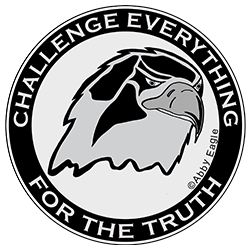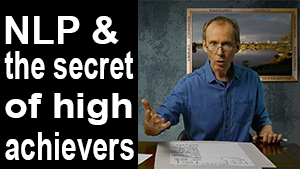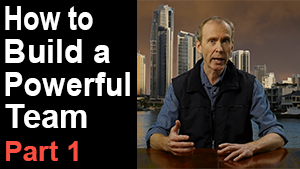
Notes from some of Osho's discourses... Phone 07 5562 5718 or send an email to book a free 20 minute telephone or skype consultation. NLP Hypnotherapy and Meditation with an Osho Zen Sannyasin. Gold Coast, Robina, Australia.
Osho: Path of the Mystic
 |
Discourses by Osho are available in book and MP3 form. The following notes were taken from the series of discourses: PATH
OF THE MYSTIC |
#1: Reincarnation. What reincarnates? Personality and individuality. Individuality has a self, a soul. Personality has an ego which is false. Past lives. What is freedom? On knowing, intellectual and existential. True knowing of one’s self is of silent communion with one’s inner being in silence. Knowing one’s self is not of the intellect. The intellect cannot know the being. The intellect is capable of knowing everything on the outside but the intellect cannot go behind itself.
#3: Birth trauma and fear of the unknown. Unconscious and superconscious. Silence
and madness. Latihan meditation. Trust in existence.
#5: What is the essence of Zen? Zen is pure freedom from all organised religions,
political ideologies and philosophies. Zen is pure meditation. Zen is the opposite
of prayer. People pray out of fear or greed. Zen originates from the root Dhyan
in India. In India it was called Zan, in China it was pronounced Chan and in Japan
Zen. Zen has no beliefs. Meditation takes you inwards to the centre of your being,
prayer takes you outwards away from your being. Religion is about coming to your
own centre. When Buddhism arrived in China it merged with Taoism and became Chan.
Tao is about let go. When Chan arrived in Japan it became free from Buddhism and
Taoism and it became Zen. Zen requires no philosophical support. Zen just uses
witnessing to develop awareness. Osho teaches Zen without using the word Zen and
its connotations. Zen is about entering into pure consciousness.
#5: Talks on group consciousness and collective consciousness. Can drop into the unconscious
mind or rise into the superconscious. The 100th monkey effect. Riots, crusades
and witch burning.
#
7: Tibetan Bardo. Instructions for meditators at the moment of death. Excellent
section on witnessing.
#8: Distinction between brain and mind. Tabula rasa and past life memory. Mind is
like a layer of conditioning around the consciousness. There are thousands of
layers to the mind, one for each life, mind is as ancient as existence. Mind does
not die with the body, it remains with the consciousness.
Each life we get
a new brain. Past lives are archived in the ‘basement’ of the brain.
Memories from this life are stored in the brain and when we die they are archived
with the other memories. Brain is like a bio computer that stores information.
At school we memorise information. We can sort that information as we do searching
the internet. Intelligence is the ability to understand and use the information
retrieved. Intelligence is not about memory. A research study demonstrated that
people with excellent memories often lack intelligence whereas people with poor
memories often have higher intelligence.
Memories are like information stored
on a computer. Sub personalities are like computer programs. Sub personalities
cannot be aware of each other. The consciousness has to be ‘in’ the
sub personality for it to be active.
You have to pass through each layer of
past lives consciously to enter the consciousness. Emptiness/nothingness = consciousness.
Mind is as eternal as life until you become enlightened at which time the mind
dies and enlightenment begins. Enlightenment continues for eternity. Meditation
is a way to penetrate the mind towards the consciousness.
#
8: Osho was born on the verge of enlightenment. On trust and gratitude. Osho’s
first day at high school and his conflict with the head master.
#
9: Trust. Osho at high school. On acceptance of yourself and being yourself.
Others define who we are. The politicians mind. Conscious mind, superconscious,
cosmic superconscious, unconscious, collective unconscious and cosmic unconscious
mind. Repression and expression. Witnessing (conscious awareness) develops the
superconscious and allows light to enter into the unconscious minds. As you develop
the superconscious the unconscious minds lose their power. Past life memories
stored in the cosmic unconscious.
#
10: Conscious mind and sub conscious mind. Ordinary memories are stored out
of conscious awareness in the subconscious. For something to be repressed into
the unconscious the conscious mind must feel that there is something wrong with
something natural. E.g. that sex is bad. The use of the term ‘unconscious
mind’ by NLP and hypnotists is quite broad and probably refers as much to
the subconscious as to the unconscious.
The gaps that you get in meditation
where it feels afterwards like you must have gone to sleep are possibly where
you have slipped from the conscious mind into the unconscious but with a loss
of conscious awareness. With increased alertness one can remain conscious during
those occurrences.
When you get a lot of imagery just let it slip by and remind
yourself to go deeper. Use NLP Timeline Techniques to release stuff stored in
the unconscious.
#
11: With each life is there a spiritual advancement on the previous one? What
are you consciously aware of? Some people are only conscious of anxiety, worry
and anguish. To be more conscious may mean to be conscious of more pain. Many
people try to be less conscious. Some use alcohol and drugs to be less conscious.
The lust for power, money and prestige also acts as a drug. But there is an inherent
longing to be totally conscious.
Buddhism and Jainism have studied past lives
for thousands of years.
After enlightenment there is no duality of the subtle
bodies and there is no duality of emotions.
Share With Friends
Subscribe to Newsletter
| DISCUSSION GROUPS | |
|---|---|
 |
|
| NLP Future Selfing | |
| NLP, Hypnotherapy & Meditation | |
| NLP Peace Mapping | |
| Facebook Discussion Group | |
| The secret of high achievers |
|---|
 |
| How to build a powerful team |
 |
| Learn the NLP Meta Model |
 |
| How to use a hypnosis pendulum. |
 |
| Weight loss tips - video series. |
 |
